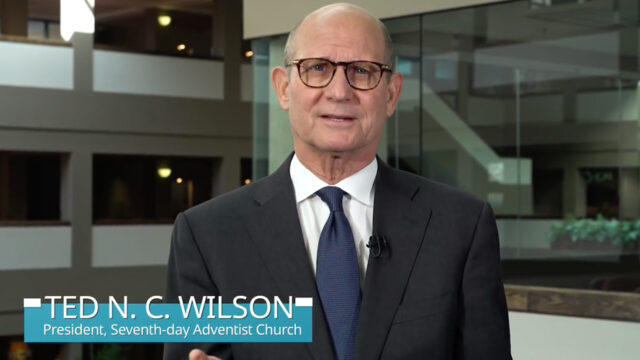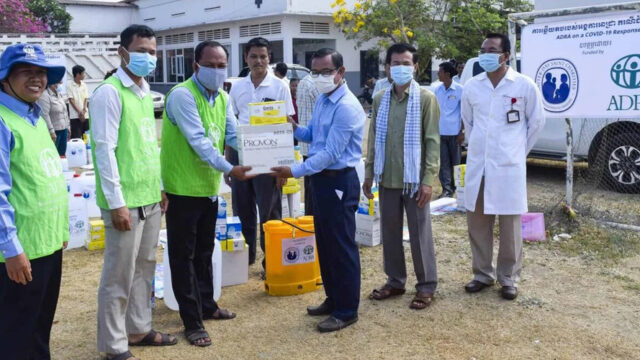The answer to saving the environment

What can I do to become part of the solution to improving our environment rather than just part of the problem—to be not only a consumer but also a producer?
For too long we’ve held the idea that humans are entitled to consume as much as Earth will provide at the expense of the balance of nature. So as an individual—one out of more than 7.5 billion people[1]—is there anything significant I can do that will help preserve life in all its forms on our planet?
Raising Awareness
Becoming aware of the current environmental issues is essential, and a good place to start is global warming.
Several decades ago, environmental awareness among the general public was concentrated more on immediate local societal impacts such as conservation and pollution. Although it was generally accepted that humans were affecting the environment in an increasingly more visible way, the subtle long-term ramifications were not as fully appreciated as they are today. Certainly, many people living in the remotest parts of some of the developing countries were oblivious to the looming global environmental issues, even while they were living a locally sustainable lifestyle. Today, however, most people are aware of some things that can be done to preserve the environment and extend the habitability of the earth.
Whether or not a person believes that humans are at least partly to blame for climate change, there is strong scientific evidence that the earth is warming as a result of the increase in greenhouse gasses, including CO2 and methane.[2] The year 2017 proved to be one of the hottest on record for many countries. NASA reports that for the first half of 2017, the average global surface temperature was 0.94°C above the 1950–1980 average. “That makes 2017 the second-hottest first six calendar months on record, behind only 2016.”[3] This enhanced greenhouse effect is probably responsible for the most energetic hurricanes in any one month—ever. Harvey, Irma, Jose, Katia, and Maria have wreaked havoc in some smaller island countries in the Caribbean as well caused flooding and destruction in the United States itself.
What Can One Person Do?
What is it that I can do that will impact the anthropological sources of greenhouse gasses and concomitant global warming?
Can one person compete with, for instance, the CO2 emitted during a volcanic eruption? There are several major eruptions taking place at the time of writing in September 2017, including Sakurajima (Kyushu, Japan); Suwanose-jima (Ryukyu Islands); Sinabung (Sumatra, Indonesia); Dukono (Halmahera); Lopevi (Vanuatu); Fuego (Guatemala); Turrialba (Costa Rica); Reventador (Ecuador); Sabancaya (Peru). It is estimated that between 65 and 319 million tons of CO2 are emitted from volcanic activity annually.[4] On the other hand, it is estimated that human activities contribute up to 34 billion tons of CO2 annually,[5] which is 100 times as much.
The first important step to restoring some sort of balance is to recognize that I am a player in this struggle to live and let live and then act. It is therefore expedient to try to reduce the levels of greenhouse gases, including CO2 emitted in my individual life activities, however small this may seem, because if everyone did their part, the effect would become significant.
The other angle of approach would be to shift the balance of carbon from the atmosphere to vegetation through reforestation and the reduction of deforestation. Although this belongs in the political arena and the average layperson is not involved in policy decision making, politicians were once children whose worldviews were shaped at a young age.
In Papua New Guinea, a local mining company has introduced an early childhood training and awareness program on composting called Agrikids to improve the sustainability of farming and address this global issue. Being informed and informative about the issues is essential. The connection between CO2 and vegetation is clear enough for most people to be concerned about the denudation of natural forests that act as giant carbon sinks keeping carbon out of the atmosphere.
Growing in Knowledge
We are learning more and more about the interlinks between the various natural global cycles, including carbon, water, nitrogen, and others. There are natural systems that demand our attention once they have been disturbed. The tundra of North America is an enormous carbon sink trapping vast amounts of CO2 frozen in a layer of permafrost. The oceans, however, contain many times more stored carbon than the terrestrial and atmospheric carbon combined, and scientists are not certain at all about the time scales involved in the cycle of carbon between the three systems. With global warming, and the associated warming of the soil and oceans, comes the increased risk of a runaway release of CO2 as the released greenhouse gas enhances the greenhouse effect, raising temperatures even further, which causes the release of even more CO2.
Our contribution to the enhanced greenhouse effect is significant and measurable, and individually we have the power to reduce it through scientifically proven strategies in decision making. This begins at home with consumer choices that favor environmentally friendly products. Decisions about energy and lifestyle can be made only after deliberately assessing viable options and choosing the one that has the best overall consequence for the planet. Consumer marketing is designed to sell a product or service for the benefit of the producer by convincing the consumer of their need, not always with the long-term viability of the planet in mind. Learning to measure our impact and the long-term effects on the environment should start at an early age to help formulate our worldviews during the transition to adulthood, when lifestyle choices are made and corporate decision making takes place.
Dealing With Waste
The other obvious anthropogenic environmental issue is waste, the product of modern living, in all its forms. Among our co-inhabitants of this world, we have the unparalleled ability to concentrate the earth’s minerals and resources during some manufacturing process, turning them into something to facilitate some aspect of our existence. And then we throw it away.
As an individual, this is an aspect of pollution that has no natural parallel and one that we can directly influence. The responsibility of being a consumer and the consequences of our choices are usually quite clear, yet the choices are more difficult to make as they affect our lifestyle.
This debate about the sustainability of our luxurious lifestyles at the disproportionate expense of the planet is not new. In Plato’s Republic, written by Plato in about 380 bc, two cities are depicted: a healthy city and a so‐called luxurious city. “The healthy or true city is sustainable, limiting its consumption to actual needs, while the luxurious city seems not to be sustainable, living beyond its needs in a perpetual quest for more.”[6]
Effects of Christianity
Culture is imbued with worldviews and is, to an extent, responsible for them. Christianity allows for the convergence of otherwise disparate worldviews to construct a shared appreciation of nature. “In western societies, ownership signals possession and control, but in other cultures ownership has broader meanings.”[7] For the Pentupi of Australia, ownership means shared identity. For the Naskapi Indians of Labrador and the Sami people of northern Norway, it means allegiance (“We belong to the land”).[8] Every human activity affects the environment to a lesser or greater extent. The worth we attach to nature is a response based upon our own background, upbringing, and experience. However, the universal values of stewardship over, and dependence upon, nature are best cultivated during our early years.
From a biblical worldview, the value of stewardship over our planet is in perfect harmony with Scripture. We have the God-given mandate to care for creation, which has always required service and stewardship, and in the twenty-first century, rescuing nature itself. The values that drive our response to nature are determined in large part by our early formal and nonformal education. Embedded within the values of stewardship and dependence can be found the three reasons for conservation, elucidated by Elton in his book The Ecology of Invasions by Animals and Plant.[9] These reasons are (1) religious, (2) aesthetic and intellectual, and (3) practical.
Using More Than We Have
Stephen Hawking has predicted that overpopulation is one of the greatest issues facing humans, and the math is simple.[10] Global Footprint Network calculates the ecological footprint for more than 200 nations from the United Nations and other data for the world as a whole, and they have estimated that as of 2013, humanity has been using natural capital[11] 1.6 times as fast as nature can renew it.[12] Living beyond our means is not sustainable even with our ability to adapt through technology. Australians generated approximately 32.4 million tons of solid waste, or approximately 1,629 kilograms of waste, per person in 2002–2003. Of this amount, approximately 27 percent of Australia’s solid waste came from municipal sources, 29 percent from the commercial and industrial sector, and 42 percent from the construction and demolition sector.[13] Approximately 54 percent of this waste went to landfills, and 46 percent was recycled, while the percentage recycled/composted waste for European countries ranged from 3.5 percent and 8.2 percent for Portugal and Greece respectively, to Germany and the Netherlands at 57.2 percent and 64.4 percent respectively.[14] Again, individually, our contribution to reducing waste may seem small, but collectively it is significant. Remember the three Rs plus one: Reduce, Reuse, Recycle, and Recover energy.
Obligated to Make a Difference
The sustainability of the diversity of life as we know it on our planet is no longer unquestioned due, in part, to us believing we are outside of the environment and not part of it. Step one is to humble ourselves and recognize that we are not only consumers but producers and have an obligation to return resources to the environment. This fundamental point of departure needs to be instilled in us from an early age so that we will make decisions and act from this worldview. The major environmental issues of global warming and pollution are, to a certain extent, the result of luxurious lifestyles of the privileged living in the developed world at the expense of the earth.
As individuals, human beings seem to be insignificant in the “big picture” of the universe, yet each one of us has an invaluable part to play in the care of the natural world. Just as our planet, apparently inconsequential in the cosmos, was chosen as a special place for humanity, where the Savior was incarnated to save each human being, so each individual has a God-directed responsibility to the ecosystem of which he or she is a part. This should be the underlying ethos of Christians.
Rodger Jones, Ph.D., is dean emeritus of the School of Science and Technology for Pacific Adventist University in Papua New Guinea.
[1] Worldometers, estimated figures from sources that include the United Nations Population Division, World Health Organization (WHO), Food and Agriculture Organization (FAO), International Monetary Fund (IMF), and World Bank.
[2] IPCC Fifth Assessment Report, 2014.
[3] The Guardian, July 31, 2017.
[4] Global and Planetary Change, vol. 33, issues 1, 2, June 2002, pp. 185-203.
[5] US Energy Information Administration.
[6] Ian DeWeese‐Boyd and Margaret DeWeese‐Boyd, “The Healthy City Versus the Luxurious City in Plato’s Republic: Lessons About Consumption and Sustainability for a Globalizing Economy,”
Contemporary Justice Review, vol. 10, issue 1:2007.
[7] S. S. Hanna, C. Folke, K. Maler, Rights to Nature (Washington DC: Island Press), p. 36.
[8] Ibid.
[9] Charles Elton, The Ecology of Invasions by Animals and Plants (Chicago: University of Chicago Press, 2000).
[10] Gabriel Samuels, The Independent Daily Edition, June 28, 2016.
[11] Natural capital is the world’s stock of natural resources, which includes geology, soils, air, water, and all living organisms.
[12] “Data Sources,” Global Footprint Network, Apr. 17, 2017.
[13] Productivity Commission, May 2006, Waste Management, Draft Report.
[14] Department of the Environment and Heritage, “2006 Submission to the Productivity Commission Inquiry into Waste Generation and Resource Efficiency.”








